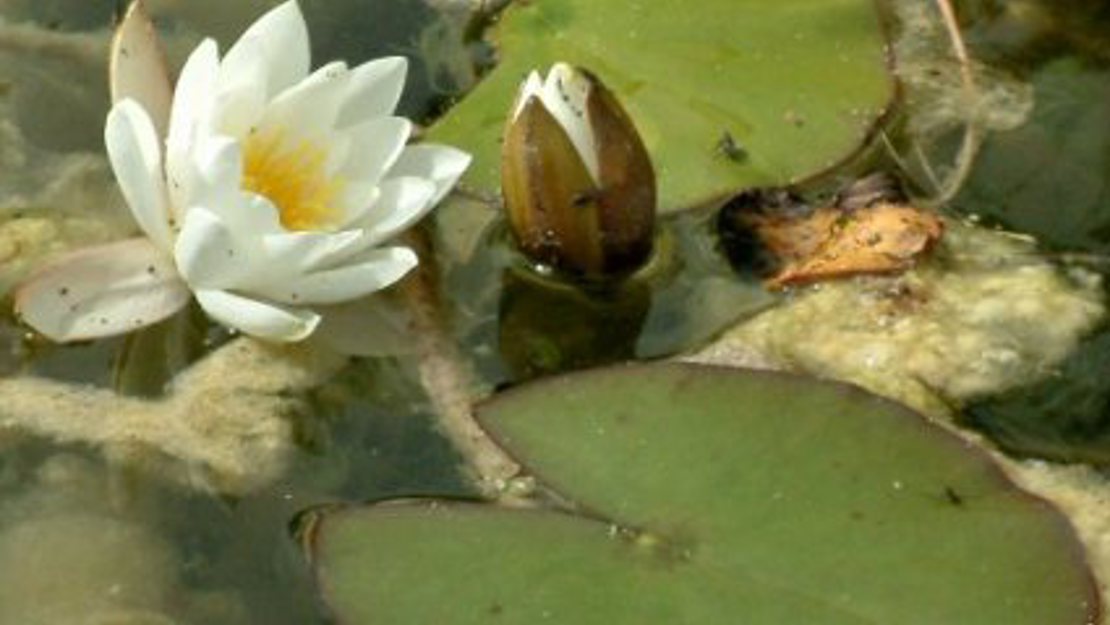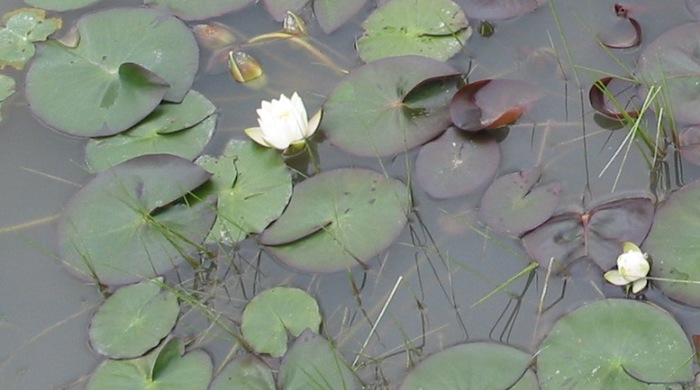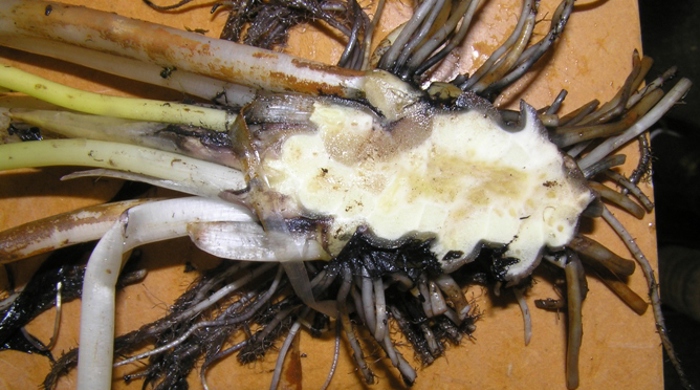Nymphaea alba
Common water lily
Also known as:
European white water lily
Family: Nymphaeaceae
Origin: Eurasia, North Africa

Regional Pest Management Plan (RPMP) status
- Not a legally declared pest
General description
Floating aquatic herb. Rhizomes are stout and < 6 cm wide. Stems are spongy and < 3 m long. Leaves are round, leathery, < 30 cm in diameter with green/pink undersides and distinct midrib.
Flowers are < 20 cm in diameter, white/pale pink with yellow centres and floating or held just above the water's surface. Hybrid flowers may be orange/pink/red/cream.
What you need to know
Although common water lily is not a legally declared pest plant, it may still be invasive in some situations. Consider lower risk alternatives for your garden, such as native plants.
Habitats
Still or slow-moving water bodies at depth of < 2 m, lakes, dams, ponds, ornamental pools.
Dispersal
Seeds dispersed by water and possibly animals. Vegetative spread from rhizomes and rhizome fragments. Human-mediated dispersal through deliberate plantings.
Impact on environment
Can alter habitat for aquatic plant and bird species and displace native submerged plants.
Control
Site Management
Follow up treated areas 3 times per year.
Recommended approaches
Physical control
Method: Dig out.
Plant parts requiring disposal: All parts.
Disposal options: Remove to greenwaste or landfill if practical.
Biocontrol
Biocontrol is currently not available for this species.
Community agrichemical control recommendations
Certified Handler/Experienced agrichemical user: Foliar spray emergent foliage with 300ml glyphosate green per 10L of water.
Caution: When using any herbicide or pesticide please read the label thoroughly to ensure that all instructions and safety requirements are followed.





